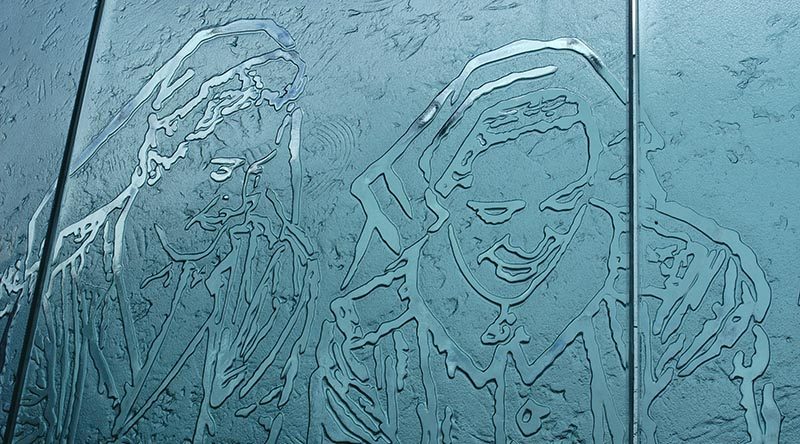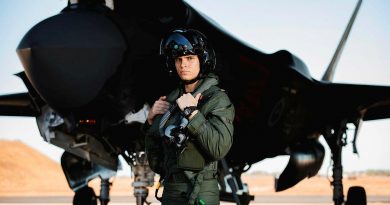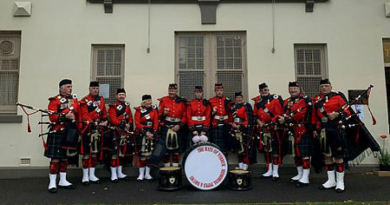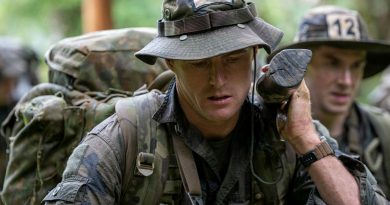Australians asked to share stories of nurses massacred on Bangka Island
Share the post "Australians asked to share stories of nurses massacred on Bangka Island"

In collaboration with the Australian College of Nursing, the ACN Foundation is calling for family, friends and colleagues to share stories and reflections of Lieutenant Colonel Vivian Bullwinkel AO, MBE, ARRC, ED, FNM, FRCNA and the 21 nurses who lost their lives at the Bangka Island Massacre in 1942 in one of the worst atrocities of World War II.
CAPTION: A glass-panel depiction of Australian Army nurses in WWII – part of a magnificent national memorial to Service Nurses on Anzac Parade, Canberra, dedicated in 1999. Photo by Brian Hartigan.
ACN CEO Kylie Ward said that it was important that the Bangka Island nurse’s courage, leadership and professional skills continue to have a legacy in Australia today.
“We are keeping the memory of these nurses alive by encouraging all family, friends and colleagues of these heroic women to contact us and share their stories,” Adjunct Professor Ward said.
“The women endured exceptionally trying conditions in the face of death.
“Even in their final moments, they stayed true to their commitment to care for others, with several supporting their injured colleagues walk into the water before their tragic deaths.
“We want to ensure that their legacy is not forgotten, and that Australians will continue to be inspired by them.
“It’s important we link the past, present and future for us to remember the sacrifice, service and leadership of these Australian nurses and their role within the Australian Army Nursing Service,” Adjunct Professor Ward said.
To learn more, or share a story or reflection, please visit The Bullwinkle Project on the ACN web site.
If you have an artefacts related to Vivian Bullwinkel or any one of the 21 fallen nurses of the SS Vyner Brooke or the Bankga Island massacre, The Australian College of Nursing would love to hear from you – via Alex Woods on 0432 044 966 or email acn.media@acn.edu.au
The stories may be included in a commemorative book that will be launched at the unveiling of the sculpture of Lieutenant Colonel Vivian Bullwinkle at the Australian War Memorial later this year.
Background:
Sixty-five Australian Army Nursing Service nurses were evacuated from Singapore on the SS Vyner Brooke because of the pending Japanese invasion. Twelve died when the ship was bombed in the Bangka Strait shortly after leaving port.
Twenty-two of the group made their way to the nearby shores at Bangka Island, where they became victims of one of the worst atrocities of the war. The nurses were ordered to walk into the sea and were machine-gunned from behind in what is now known as the Bangka Island Massacre.
When Japanese soldiers massacred the group, Lieutenant Colonel Bullwinkel was struck by a bullet and pretended to be dead, before realising she was the sole survivor. After hiding with a wounded soldier, whom she also cared for for 12 days, she surrendered and spent three and half years in captivity as a Prisoner of War.
.
.
Bangka Island Nurses
Sister Kathleen Margaret Neuss
Kathleen ‘Kath’ Neuss was born in Mollongghip, Victoria, in 1911 and moved with her family to Inverell, New South Wales, when she was 18 months old. She was one of six siblings and often travelled to school by horse.
Sister Neuss originally wanted to be a schoolteacher but trained as a private nurse in Inverell before being trained at Royal Prince Alfred Hospital in Sydney.
Sister Neuss was gravely injured in the bombing of the SS Vyner Brooke but made it alive to Radji Beach. One of her last acts was to give her life jacket to nurse Pat Gunther, who washed up on another island and eventually survived the war.
She was 31 when she was killed on Bangka Island
Sister Dorothy Gwendoline ‘Buddy’ Elmes
Dorothy ‘Buddy’ Elmes was born in Armidale, Victoria, in 1914 and was often known as ‘Buddy’ to her friends. She spent most of her life in Melbourne and Chestnut and was often described as outgoing, confident and with a quirky sense of humour.
In 1935 she began training as a nurse at Corowa Community Hospital, where she graduated four years later and was described as ‘one of our best trainees’ by her matron.
She was 27 when she was killed on Bangka Island
Sister Florence Aubin Salmon
Florence Aubin Salmon was born in Sydney in October 1915 and lived in Sydney and Bathurst before her deployment overseas.
Aside from her family connections and her brother, Leonard, who was also in the Australian Army with the 2/12th Field Ambulance, little is known about Sister Salmon.
She was 26 when she was killed on Bangka Island
Sister Esther Sarah Jean ‘Stewie’ Stewart
Esther Sara Jean ‘Stewie’ Stewart was born on 15 October 1904 in Brisbane, Queensland.
Sources say she lived in Coolangatta for a period before moving down to Sydney to work as a nurse.
She began training as a nurse at Diamentina Hospital in Brisbane before completing her training at the Royal Prince Alfred Hospital and Crown Street Women’s Hospital in Sydney.
Commonly known by her family and friends as ‘Jean’ or ‘Stewie,’ she was very strong in her Christian faith and was a devout Presbyterian.
She was 37 when she was killed on Bangka Island
Sister Nancy Harris
Nancy Harris was born in Armidale, NSW, on 15 January 1913. After moving to North Sydney with family, she was trained as a nurse at the Royal North Shore Hospital. She later worked at The Coast Hospital before enlisting in the Army.
She was well known as a traveller and was recorded travelling to Fiji, China, and Japan just before the war.
She was 29 when she was killed on Bangka Island
Sister Joyce Ada Bridge
Joyce Ada Bridge was born in July 1907 in Scone, NSW.
She was well-known as a ‘typical country girl’ who took pride in her work as a nurse, often noted by family, friends and colleagues to always have a smile on her face.
Dancing was a passion of hers, having been noted several times enjoying local dances across her hometown. As she got older, she was known to enjoy various active sports, including tennis, swimming and golf, when she was not working.
She was 34 when she was killed on Bangka Island
Sister Mona Margaret Anderson Tait
Mona Tait was born in Booval, Queensland, in February 1915. Soon after the birth of her sister Auriel in 1917, the family moved to Newcastle, NSW.
She began training at Cessnock District Hospital in the Hunter Valley and, after graduating, moved to Canberra. She was the sister-in-charge of the X-ray department at Canberra Hospital for three years before she enlisted in the Australian Army Nursing Service.
She was 27 when she was killed on Bangka Island
Sister Janet ‘Jenny’ Kerr
Janet ‘Jenny’ Kerr was born in August 1910 in Monteagle, NSW. Known as ‘Jenny’ to her friends and colleagues, she was described as a no-nonsense girl who was well-known and held in high esteem by her community.
Nursing was a family affair for the Kerrs, with Jenny following her mother into the profession. She was trained at St George’s Hospital in Kogarah, Sydney, and was a theatre sister at the hospital for many years.
According to Lieutenant Colonel Bullwinkel after her return from war, Sister Kerr was the first nurse to note that the enemy forces had killed the male survivors that washed up on Bangka Island, saying, “Bully, they have murdered them all”.
She was 31 when she was killed on Bangka Island
Sister Rosetta Joan Wight
Rosetta Joan Wight was born in Fish Creek, Victoria, in December 1908. She was one of four children and lived on a farm in a small rural town east of Melbourne for much of her life.
Archives have shown that Sister Wight was a nurse by profession in Melbourne and passed her Nurses Board exams while at Bendigo Hospital in 1935.
In the bombing of the SS Vyner Brooke, Sister Wight was one of the worst injured, suffering shrapnel wounds through to the bone across her lower body.
She was 33 when she was killed on Bangka Island
Sister Clarice Isobel Halligan
Clarice Halligan was born in Ballarat, Victoria, in September 1904. She was one of eight children and the first of the siblings to die. They lived in Ballarat for their father’s work before moving to Kew, a suburb in Melbourne.
She is reported to have had a carefree childhood along the Yarra River with her siblings, with swimming, eating ice cream and exploring the Kew Mental Asylum favourites of the family.
Sister Halligan was passionate about nursing from a young age, with her family still retaining many of the certificates of her training.
She was 37 when she was killed on Bangka Island
Sister Mary Elizabeth ‘Beth’ Cuthbertson
Mary ‘Beth’ Cuthbertson was born in March 1910 in Stirling, South Australia.
Little is known about Mary Cuthbertson, aside from growing up in Ballarat and being trained as a nurse at Ballarat Base Hospital before her departure to Malaya as part of the Australian Army Nursing Service.
She was 31 when she was killed on Bangka Island
Sister Elaine Balfour-Ogilvie
Sister Elaine Balfour-Ogilvy was a confident and positive person who enjoyed singing and swimming. In the sinking of the SS Vyner Brooke, she volunteered to stay on board until the very last minute to ensure all others were safely evacuated to lifeboats.
She was 30 when she was killed on Bangka Island.
Sister Florence Casson
Known as ‘Flo’ to her friends and colleagues, Lieutenant Florence Casson was one of the nurses severely wounded in the bombing of the SS Vyner Brooke but was able to escape the sinking ship with support from her nursing colleagues.
Unable to walk herself, her colleagues supported her again when they were forced to walk into the water before they were killed.
Flo was 38 when she was killed on Bangka Island.
Matron Irene Drummond
“Chin up girls. I’m proud of you all, and I love you all.”
These are some of the last words from Matron Irene Drummond.
Matron Drummond was a celebrated nurse that could get a ward to operation under 48 hours in extreme conflict conditions. Her colleagues remembered her as a ‘mother hen that would fuss over her chicks.’
She is also credited with sending civilian women and children who washed ashore to a neighbouring town, saving them from the massacre.
She was 36 when she was killed on Bangka Island.
Sister Ellen ‘Nell’ Louisa Keats
Known as ‘Nell’ by her friends and colleagues, Ellen Keats was born, raised and worked as a nurse in South Australia before enlisting in the Australian Army Nursing Service.
She was a young but exceptional nurse known for being passionate about playing the pianoforte.
She was 26 when she was killed on Bangka Island.
Lieutenant Mary Eleanor ‘Ellie’ McGlade
Few nurses took to caring from such a young age as Sister Mary ‘Ellie’ McGlade.
On her school records, teachers had noted that “no one has a chance to get seriously ill before she is reported and nursed back to normal by the indefatigable Ellie.”
It is a passion she took to her career, becoming a nurse at the Royal Prince Alfred Hospital in Sydney before enlisting in the Australian Army Nursing Service.
She was 39 when she was killed on Bangka Island.
Sister Lorna ‘Florence’ Fairweather
Lieutenant Lorna Fairweather was a young but exceptional disability-care nurse.
In her time with the Australian Army Nursing Service, she worked with the 2/10th Australian General Hospital and the 2/13th Australian General Hospital. She worked with many nurses who ended up with her on Bangka Island.
She was 29 when she was killed on Bangka Island.
Sister Alma May Beard
Sister Alma May Beard was a young WA rural nurse who loved travelling, having moved to Perth and then Sydney to work in larger hospitals.
She was well respected by her colleagues, including Lieutenant Colonel Vivian Bullwinkel, who wrote to Sister Beard’s parents upon her return from war, stating that her brave conduct in the hour of crisis added lustre to the service.
She was 29 when she was killed on Bangka Island.
Sister Minnie Hodgson
Before her death, she was a well-respected nurse who supported Western Australia’s remote communities and often travelled between her home town of Leederville and Perth.
She was 33 when she was killed on Bangka Island.
Sister Bessie Wilmott
Bessie Wilmott was born in Claremont, Western Australia, in 1913. She was known as a member of the Church of England, who was interested in theatre and was often seen with her stepmother and siblings.
She was trained as a nurse at Royal Perth Hospital and had periods of service at Perth Public Hospital and Metropolitan Infectious Diseases Hospital.
Sister Wilmott was known as a strong swimmer, having learned to swim as a child in Western Australia.
She was 28 when she was killed on Bangka Island
Sister Peggy Everett Farmaner
Peggy Farmaner was born in 1912 in Claremont, Western Australia and was part of a well-known settler family from the area.
She was known to have a garden under her name at her family estate that was tended to by family.
Her nursing career began at Perth Hospital, after which she moved to Sydney.
She was 28 when she was killed on Bangka Island
.
.

.
.
Share the post "Australians asked to share stories of nurses massacred on Bangka Island"





